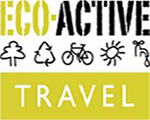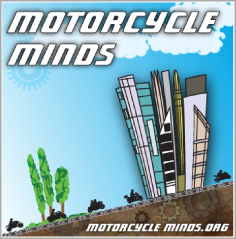![]() Right To Ride congratulates the “States of Jersey”, the island of Jersey’s official website for public services and information online, for recognising that a motorbike rather than a car can be a more environmentally friendly choice.
Right To Ride congratulates the “States of Jersey”, the island of Jersey’s official website for public services and information online, for recognising that a motorbike rather than a car can be a more environmentally friendly choice.
If there was a motorcycle utopia, Jersey appears to be it. We assumed that riders there face the same issues as we do here, even with a maximum speed limit of 40mph – 20-30 mph in urban areas and 15 mph on the island’s “green” lanes. Typically 12,000 people currently travel into St Helier, Jerseys capital, each morning during the rush hour in 8,800 cars or vans and 485 motorcycles.
Although with 350 miles of paved road, motorcycling is recognised and promoted for all the right reasons
Read On
The information on the website offers suggestions on how to get yourself on the road, Compulsory Basic Training (CBT), safety tips, pre-test lessons and advanced courses.
Right To Ride’s, Trevor Baird, says, “The website information for motorbikes included in the greener travel, environment and greener living section, is refreshing and simple, with no presentation of the dreaded so called “facts” that motorcyclists are more likely to be injured in serious or fatal crashes than car drivers, death and gloom rhetoric that is presented by other governments.”
However the recognition of motorcycling “Green Credentials” does not stop there, the States Of Jersey, proposals contained in the Sustainable Transport Policy July 2010 actually encourages the use of motorcycles, in particular smaller engined scooters.
Motorcycle Parking
The demand for parking motorcycles exceeds capacity. The use of motorcycles with small engines is environmentally preferable to single occupant cars and should therefore be encouraged. The proportion of space given over to motorcycle parking will be increased.
Developments in electric vehicle technology will be followed and if appropriate, electric charging points for motorbikes will be provided in car parks.
Additional on-street space will be provided, either in areas where other vehicles would not have enough room to park, or by conversion of a proportion of existing car parking spaces where appropriate. Where on-street parking is provided, a proportion should be designated for motor cycles.
Increase and improve motorcycle parking provision on-street and at off-street public car parks.
Encouraged Training Awareness
Motorbikes are the most commonly used low emissions vehicle and should be encouraged, though it is recognised their users are vulnerable in road accidents.
Technological advances have resulted in improved braking systems, tyre specifications and other features leading to safer vehicles. Significant advances have also been made in the range of protective clothing available.
The most important factor with regards to the safety of motorcyclists, is rider and driver behaviour.
Review and develop training schemes for motorcyclists as well as awareness by other road users in order to promote safe motorcycling.
Motorbikes – ECO Active
 Greener travel (environment and greener living section): Why choosing a motorbike over a car can be a more environmentally friendly choice and how to get yourself on the road.
Greener travel (environment and greener living section): Why choosing a motorbike over a car can be a more environmentally friendly choice and how to get yourself on the road.
Advantages of owning and riding a motorcycle:
- it is more fuel cost effective than most makes of cars
- usually lower carbon emissions in comparison to cars
- it allows you to be more flexible in traffic
- it makes parking easier. A bike parks in a third of the space of a car and angle parking is permitted
- it saves you on maintenance and repair bills compared to cars. Motorcycle engines are easier to access and you can do more of the upkeep yourself
- it lets you connect better with the environment. On a bike, you tend to enjoy your surroundings more, keeping you more alert and making the trip more enjoyable and stress relieving
Safety tips
- make yourself visible
- always wear protective clothing, even for short trips
- constantly monitor your riding and think about what you are doing
- seek feedback from skilled riders, try a BikeSafe assessment or Advanced Rider training course
- slow down for approaching bends – accelerate out, but keep to the speed limit. If you’re going too fast, don’t panic, lift your head and look out of the bend in the direction you want to go
How to get on the road
Anyone wishing to ride a motorbike or moped on public roads is legally required to take Compulsory Basic Training (CBT). Although it is not an exam, it is a course of training you are required to complete satisfactorily. It is a basic course in motorcycling, and you must show a safe level of competence while on the public road for the last element of training. CBT is designed to be helpful, and not obstructive, and will give you a good start to your riding.
Pre test lesson
Pre-test lessons, which can be taken after a few months of riding when you feel more confident with your motorcycle; we can take you out and help prepare you for your practical test. These lessons take between 1 – 2 hours for a light motorcycle and cost £35.00 and for a heavy motorcycle between 2 – 3 hours and cost £55.00.
Advanced courses
Advanced courses suitable for riders who have held their full licence for at least 6 months can also be arranged. These courses can take place in Jersey, France or the UK.
The last word, which we couldn’t agree more with, from the advantages of owning and riding in Jersey is, “On a bike, you tend to enjoy your surroundings more, keeping you more alert and making the trip more enjoyable and stress relieving.”
Links
Motorbikes in Jersey – Click Here ![]()
Sustainable Transport Policy July 2010 – pdf Click Here ![]()


Speak Your Mind